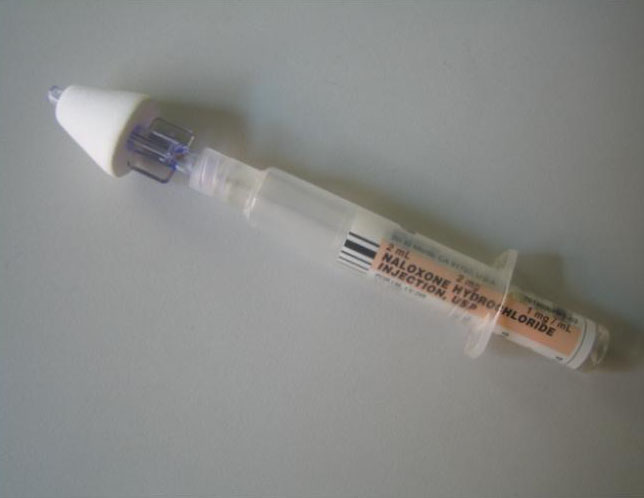To help stem the tide of overdose deaths from prescription drugs like OxyContin and Vicodin, the U.S. FDA for the first time is considering widespread distribution of a drug that is an antidote for drug overdoses.
Naloxone, which has been available by prescription for nearly two decades, may soon be available as an over-the-counter medication. Sold under the brand name Narcan, naloxone is non-addictive, nontoxic and able to reverse the effects of potentially fatal drug overdoses. In addition to counteracting an overdose from prescription drugs including oxycodone, hydrocodone, morphine, codeine and fentanyl, naloxone is effective when used with heroin overdoses.
The antidote works by blocking specific drug receptors in the brain. Narcan/Naloxone is ineffective for overdoses of other substances such as cocaine and alcohol.
Besides obtaining naloxone by prescription, some states allow community-based programs to distribute the antidote drug to families of high-risk drug users. Ambulance crews and firefighters have also had access to the drug. Since 1996, more than 50,000 doses of naloxone have been distributed and more than 10,000 cases of overdose reversal have been reported.

Dr. Nora Volkow, Director of the National Institute on Drug Abuse, says that the drug should be available without a prescription. Naloxone has the potential to save the lives of thousands of Americans who are currently taking opioid painkillers under a doctor’s care as well as those who are illegally abusing these highly addictive drugs. According to an article in The New York Times, there is no risk of naloxone abuse. The drug does not produce a high, has few side effects and is impossible to overdose on. When used by people addicted to drugs, naloxone can cause withdrawal symptoms that are unpleasant but not dangerous.
At a joint press conference this week between the FDA, DEA and Centers for Disease Control, FDA Commissioner Dr. Margaret Hamburg announce that her agency had been holding public hearings to determine if naloxone should be made widely available. In 2011, several states launched pilot programs that provided naloxone rescue kits to known drug users. These kits included either injectable or nasal spray forms of the antidote drug. At that time, the U.S. Office of National Drug Control Policy opposed the use of naloxone by anyone other than trained medical personnel.
Due to the epidemic proportion of prescription drug overdoses, the federal government now appears ready to change its stance on the widespread distribution of naloxone as an overdose antidote. According to the CDC, oxycodone and hydrocodone (the main ingredients in OxyContin and Vicodin) were responsible for more than 475,000 emergency room visits in 2009, a total that more than doubled in five years. Overdose deaths from these opioid painkillers now exceed the death toll from heroin and cocaine combined.
